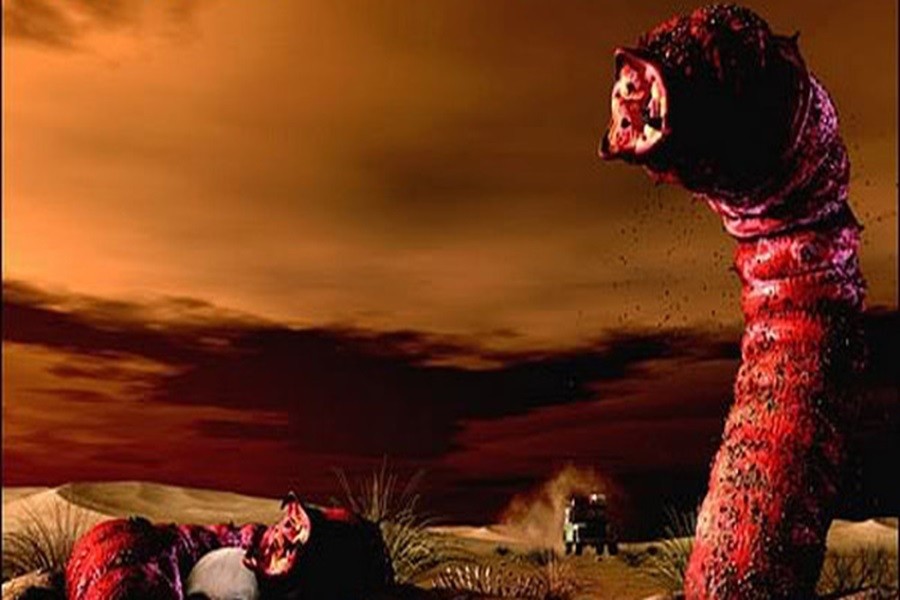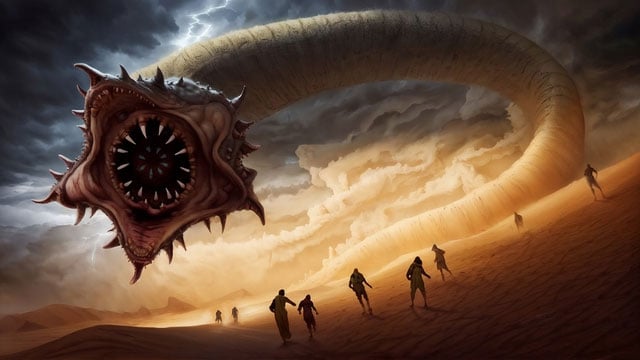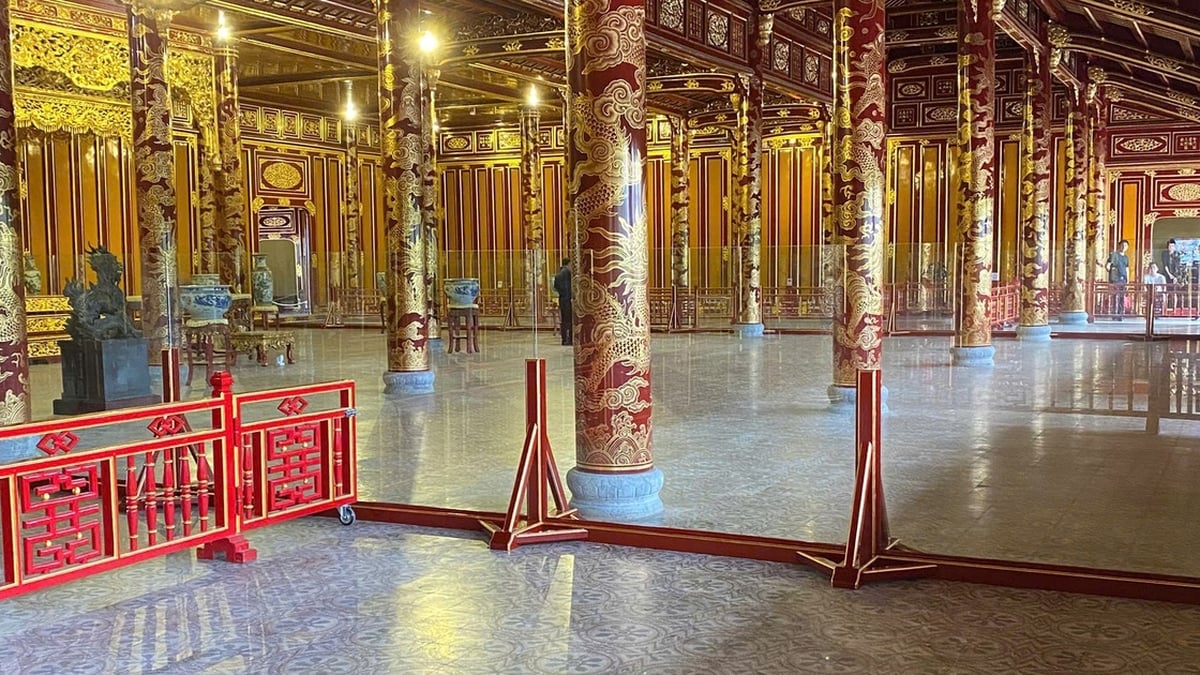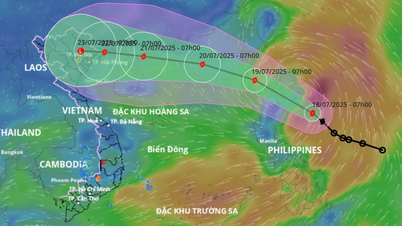According to VTC News , the Gobi desert in Asia is a vast expanse of gray-black sand lying silently under the wind and rain. This is a large, dry land with an area of about 1.3 million square kilometers and is considered one of the largest deserts in the world .
Unlike other normal deserts, the Gobi has not only sand but also mountains and giant rocks.
This arid land is most notable in history as part of the great Mongol Empire. The Gobi has a long history of human habitation, primarily by nomadic peoples.
In addition to the secrets of the harshness of nature and the perseverance and majesty of man, this place also has a legend about a magical worm that can kill people.

Painting depicting the death worm.
The half-true, half-fictional stories about this worm make many people shudder, but many people also set out to find it as if searching for the truth about a mysterious legend that has yet to be solved.
Although they have not seen it with their own eyes, they believe that this creature can exist somewhere in the harsh lands along the China-Mongolia border.

There was a time when the Mongolian death worm became famous to Westerners. They inspired sensational novels as well as many people flocked to the Gobi desert to search for them. (Illustration photo).
According to information on Dan Viet , locals call it allghoi khorkhoi or intestine worm because it looks very much like a piece of blood-red cow intestine, with darker chambers in some places, and protruding nodes at both ends.
Measuring 0.5 to 1.5 meters in length, this worm looks very strange, its head and tail are indistinguishable because no one can see where its eyes, nostrils or mouth are. Its way of moving is also very unusual, rolling and wriggling very quickly.
According to legends that have been whispered among the people of the Gobi desert for thousands of years, this worm has a mysterious ability: it can spray yellow acid poison that kills people instantly upon contact or can destroy prey from a distance with a super strong electric current.
Czech explorer Ivan Mackerle described the death worm as told by locals: “It looks like a sausage, as fat as a man’s arm, rather like the intestines of cattle. Its tail is short as if cut off, but not pointed.
It is difficult to tell which is the head and which is the tail because there are no visible eyes, nose, or mouth. It moves in an unusual way - rolling and rolling, or wriggling on one side. It lives in the desolate dunes and burning valleys of the Gobi desert, under which saxaul trees grow.
You can see it during the hottest part of the year, which is June and July. Then it burrows into the sand and sleeps for most of the rest of the year. It usually comes out after rain, or when the ground is moist.”
In May 2005, scientists and explorers from Fortean Zoo, Mysterious World and E-Mongol spent a month studying the reports and continuing their hunt for the death worm.
Richard Freeman, the head of the research team, said that this strange creature may not be a worm because worms need moisture to survive. It could be a legless reptile that lives underground.
“It could be a giant member of a group of reptiles called worm lizards or two-headed snakes.”
In fact, there is a group of these animals but they are still not well known due to little research.
Mr. Freeman also believes that people have exaggerated the death worm's killing power. He thinks it is like a salamander, a fire dragon of the Middle Ages, but extremely poisonous.
The existence of the death worm remains a hotly debated topic that scientists have yet to find an answer to.
However, scientifically speaking, researchers believe that the Mongolian death worm could be a creature with the dual characteristics of an electric eel and a cobra that can spit venom without biting and actually exists.
It is very possible that such a special insect appeared in this harsh desert, and became a fear for thousands of years for the people here.
KHANH LINH (t/h)
Source






























































































![[Infographic] In 2025, 47 products will achieve national OCOP](https://vphoto.vietnam.vn/thumb/402x226/vietnam/resource/IMAGE/2025/7/16/5d672398b0744db3ab920e05db8e5b7d)





Comment (0)